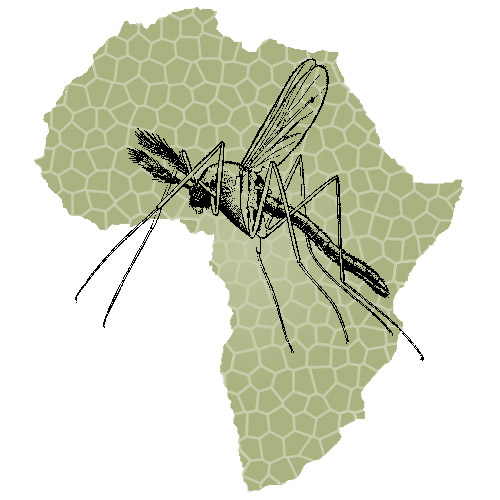Medicinal Uses
Quinine extracted from the bark of Cinchona
pubescens still
works today to treat malaria. It can be
synthesized, but the best source of quinine is still C.
pubescens.
The use of natural quinine for controlling malaria is beginning
 to make a comeback. Some strains of the malaria have
become resistant to the synthesized quinine, but the natural
quinine is able to treat those strains effectively.
to make a comeback. Some strains of the malaria have
become resistant to the synthesized quinine, but the natural
quinine is able to treat those strains effectively.
Cinchona pubescens was a very important and life-changing discovery in the rainforest. During the mid 1600s to mid 1800s the quinine bark was used to treat malaria as well as fever, indigestion, mouth and throat diseases, and even cancer. Today, the quinine is an herbal medicine all around the world, but the reasons for using it vary from country to country. For example, in South America the quinine bark is used as a natural herb for cancer of the liver, glands, mesentery, spleen, and breasts. In Europe, the herbal medicine is used for hair loss, alcoholism, appetite stimulant, liver/spleen/gallbladder disorders, and leg cramps. In the United States, quinine is used as a tonic and digestive aid, to reduce heart palpitations and to bring heart functions back to normal. The quinine bark in the U.S. is also used to stimulate digestion and appetite; for leg cramps, varicose veins, hemorrhoids, headaches, colds, flu as well as for many other symptoms or conditions. A more complete list of the uses of quinine around the world can be found on the Tropical Plant Database. Cinchona pubescens is not the only tree that can fight malaria; Kiss-Me-Quick is an anti-malarial tree as well!
What is malaria?
Malaria is a disease that could be considered one of the oldest, but deadliest diseases to affect such a wide variety of people. It is estimated that malaria infects over 200 million people and kills on an average between 1 and 2.5 million people, annually. The occurrences of malaria have increased over the past twenty years because of increased transportation as well as increased resistance to drugs used to treat malaria. Malaria is resistant to most drugs that are usually available for use by the population. The most drug resistant form of malaria is along the western and eastern borders of Thailand. In most places around the world, quinine as well as mefloquine and halofantrine can be used to cure this devastating disease. Much research has been done to further comprehend the resistance to the already discovered drugs. This had lead to more exploration of how to reverse the resistance or how to create new drugs that could cure the disease.
Malaria is a co mbination of four different
diseases caused by four different parasites. The
names of the parasites are: Plasmodia
falciparum, Plasmodia vivax,
Plasmodia malariae, and Plasmodia ovale.
The symptoms of malaria can include flu-like
symptoms such as chills, fever, and muscle pain.
The most severe form of malaria, Plasmodia
falciparum, can cause those symptoms as well as
enlargement of the liver and spleen, along with
damage to the kidneys and brain by clogging of the
arteries to those organs.
mbination of four different
diseases caused by four different parasites. The
names of the parasites are: Plasmodia
falciparum, Plasmodia vivax,
Plasmodia malariae, and Plasmodia ovale.
The symptoms of malaria can include flu-like
symptoms such as chills, fever, and muscle pain.
The most severe form of malaria, Plasmodia
falciparum, can cause those symptoms as well as
enlargement of the liver and spleen, along with
damage to the kidneys and brain by clogging of the
arteries to those organs.
The complex lifecycle of malaria takes place in two hosts which are made up of the vertebrate host and the parasite’s vector, the mosquito. To learn more about this very involved life cycle, visit Life Cycle of the Malaria Parasite.
Another use to humans that would not be
considered so much medicinal, more so
"advantageous"...
Have you heard of a Gin & Tonic? You may have
been more familiar with Cinchona pubescens
than you thought! As discussed on the
homepage, the British used tonic water made with
quinine to make Gin & Tonics to cure their malaria.
Quinine used to be a larger component of the “tonic”
in Gin & Tonics. Today,
 tonic you find at any
supermarket will contain corn syrup and rarely
contains any quinine. There are a select few brands
of tonic that have quinine still as an ingredient.
Interestingly enough, because of the components
of quinine, when it is exposed to ultraviolet light,
it is fluorescent. So, if you are out on the
town, hopefully you are lucky enough to order a Gin
& Tonic that actually has quinine in it. You
will light up the room with your neon drink and
will be able to share your knowledge about why you
are the only one at the bar with a glow-in-the-dark
drink. (At least I
hope you would.)
tonic you find at any
supermarket will contain corn syrup and rarely
contains any quinine. There are a select few brands
of tonic that have quinine still as an ingredient.
Interestingly enough, because of the components
of quinine, when it is exposed to ultraviolet light,
it is fluorescent. So, if you are out on the
town, hopefully you are lucky enough to order a Gin
& Tonic that actually has quinine in it. You
will light up the room with your neon drink and
will be able to share your knowledge about why you
are the only one at the bar with a glow-in-the-dark
drink. (At least I
hope you would.)
Want to know a little about the person who is behind this webpage? Visit Contact Me.